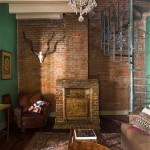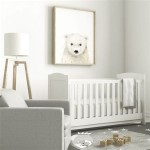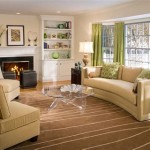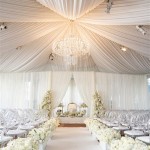Elevating Your Living Room: A Comprehensive Guide to Wall Decor Ideas
The living room serves as a central hub within a home, often acting as a space for relaxation, entertainment, and social gatherings. As such, its aesthetic appeal significantly impacts the overall ambiance and perceived comfort of the residence. Wall décor, in particular, plays a pivotal role in establishing the room's character and reflecting the homeowner's personal style. This article will explore a variety of wall decoration ideas, offering insights into different approaches and considerations for transforming a living room into a visually appealing and welcoming environment.
The selection of appropriate wall décor necessitates careful consideration of several factors, including the existing architectural style, the size and layout of the room, the homeowner's stylistic preferences, and the desired mood or atmosphere. Prior to embarking on a decorating project, it is advisable to assess the existing color palette, furniture arrangement, and natural lighting conditions to ensure a cohesive and harmonious design. Furthermore, budget constraints and practical considerations, such as ease of installation and maintenance, should be taken into account.
Creating Visual Interest with Artwork
Artwork constitutes a timeless and versatile option for enhancing living room walls. The term "artwork" encompasses a broad spectrum of mediums, ranging from traditional paintings and prints to photography, sculptures, and mixed-media installations. The selection of artwork should align with the homeowner's personal taste and complement the overall design scheme of the room. For instance, abstract art may be well-suited for a modern or contemporary setting, while landscape paintings can evoke a sense of tranquility and nature in a more traditional space.
The size and placement of artwork are crucial considerations. A large-scale piece can serve as a focal point, drawing the eye and establishing a sense of drama. Conversely, a collection of smaller pieces can create a gallery wall, adding texture and visual complexity. When hanging artwork, it is important to ensure that the pieces are properly aligned and spaced, and that they are hung at an appropriate height, typically at eye level.
Framing plays a significant role in the presentation of artwork. The choice of frame should complement both the artwork itself and the surrounding décor. Simple, minimalist frames are often preferred for modern art, while more ornate frames may be suitable for traditional pieces. It is also important to consider the color and texture of the frame, ensuring that it harmonizes with the wall color and other elements in the room.
Beyond traditional framed art, consider alternative presentations such as canvas prints, metal prints, or acrylic prints. These options offer a sleek and contemporary look, suitable for modern living spaces. The absence of a frame can also create a more streamlined and minimalist aesthetic.
Thematic artwork can also enhance the ambiance of the living room. For example, coastal-themed artwork, featuring seascapes or nautical motifs, can create a relaxing and inviting atmosphere, particularly in homes located near the coast. Similarly, abstract art featuring bold colors and geometric patterns can inject energy and vibrancy into a more neutral space.
Utilizing Mirrors to Enhance Space and Light
Mirrors offer a practical and aesthetically pleasing solution for enhancing the perceived space and brightness of a living room. By reflecting light, mirrors can make a room appear larger and more open. They can also be used to create interesting visual effects and add depth to the décor.
Strategically placed mirrors can amplify natural light, making a room feel brighter and more inviting. Consider positioning a mirror across from a window to reflect sunlight and illuminate the space. Alternatively, a large mirror placed on a blank wall can create the illusion of a larger room, particularly in smaller living spaces.
Mirrors are available in a wide variety of shapes, sizes, and styles, allowing for versatility in design. A large, ornate mirror can serve as a focal point, while a collection of smaller mirrors can create a more eclectic and textured look. Frameless mirrors offer a minimalist and contemporary aesthetic, while framed mirrors can add a touch of elegance and sophistication.
Consider the architectural style of the living room when selecting mirrors. A Victorian-style living room may benefit from ornate, antique mirrors, while a modern living room may be better suited for sleek, minimalist mirrors. The frame material and finish should also complement the existing décor and color palette.
Beyond traditional wall-mounted mirrors, consider incorporating mirrored furniture or decorative objects. Mirrored coffee tables, side tables, and accent pieces can add a touch of glamour and sophistication to the living room. These elements can also help to reflect light and create a more spacious feel.
When hanging mirrors, it is important to ensure that they are securely mounted and that they are positioned at an appropriate height. Avoid placing mirrors in areas where they will reflect clutter or unsightly views. Instead, focus on reflecting attractive elements in the room, such as artwork, plants, or architectural details.
Incorporating Textural Elements with Wall Decor
Adding texture to living room walls can create depth, interest, and a more tactile experience. Textural wall décor can range from subtle, natural elements to bold, three-dimensional installations. The choice of texture should align with the overall design scheme of the room and the desired mood or atmosphere.
Wallpaper offers a versatile option for adding texture and pattern to walls. Textured wallpapers are available in a wide variety of materials, including grasscloth, fabric, and embossed paper. These wallpapers can create a subtle yet impactful effect, adding warmth and depth to the living room.
Wood paneling is another popular choice for adding texture and natural warmth to walls. Wood panels can be installed in a variety of patterns, such as shiplap, board and batten, or tongue and groove. The type of wood and the finish can significantly impact the overall aesthetic of the room. For instance, reclaimed wood can add a rustic and charming touch, while sleek, modern wood panels can create a more contemporary look.
Fabric wall hangings can also add texture and visual interest to the living room. Tapestries, macramé hangings, and quilted panels offer a unique and artistic way to decorate walls. The choice of fabric and pattern should complement the existing décor and color palette. These elements can also add a sense of warmth and comfort to the room.
Consider incorporating natural elements, such as stone or brick, to add texture and a sense of authenticity to the living room. Exposed brick walls can create a loft-like feel, while stone accents can add a touch of rustic elegance. These elements can be incorporated into the architectural design of the room or used as decorative accents.
Three-dimensional wall sculptures offer a bold and contemporary way to add texture and visual interest to walls. These sculptures can be made from a variety of materials, including metal, wood, and ceramic. The size and shape of the sculpture should be carefully considered in relation to the surrounding décor.
Living walls, also known as vertical gardens, represent a unique and innovative way to add texture and life to the living room. These walls consist of plants growing vertically on a structure, creating a lush and verdant display. Living walls can purify the air, reduce stress, and add a sense of tranquility to the space.
When incorporating textural elements into the living room, it is important to strike a balance between visual interest and clutter. Avoid overusing textures, as this can create a chaotic and overwhelming effect. Instead, focus on selecting a few key textures that complement each other and enhance the overall design scheme.
The lighting conditions in the living room can also impact the appearance of textures. Consider using spotlights or accent lighting to highlight the texture of walls and create dramatic shadows. This can add depth and dimension to the room.
Ultimately, the selection of wall décor should be guided by the homeowner's personal taste and the desired ambiance of the living room. By carefully considering the factors discussed in this article, it is possible to transform a living room into a visually appealing and welcoming space that reflects the homeowner's individual style and preferences.
:strip_icc()/cdn.cliqueinc.com__cache__posts__268171__emily-henderson-target-design-advice-268171-1537395824654-image.700x0c-3bf5dbafc49045e5b14c9ad244891f94.jpg?strip=all)
40 Best Living Room Wall Décor Ideas
:strip_icc()/cdn.cliqueinc.com__cache__posts__250637__living-room-wall-decor-ideas-250637-1519691875170-image.700x0c-26e8f1a9a0f94a70a0d92bb267bf0820.jpg?strip=all)
40 Best Living Room Wall Décor Ideas

40 Living Room Wall Decor Ideas From Designers Havenly Interior Design Blog

27 Stunning Living Room Wall Decor Ideas Displate Blog

20 Living Room Wall Decor Ideas

40 Living Room Wall Decor Ideas From Designers Havenly Interior Design Blog

27 Stunning Living Room Wall Decor Ideas Displate Blog
:strip_icc()/houseofchais-6a9cae983c3647dcb38399ec64d584a8.jpeg?strip=all)
40 Best Living Room Wall Décor Ideas

9 Wall Decorations For Living Room Rock Solid Rustic

10 Brilliant Living Room Wall Decor Ideas Designcafe
Related Posts







